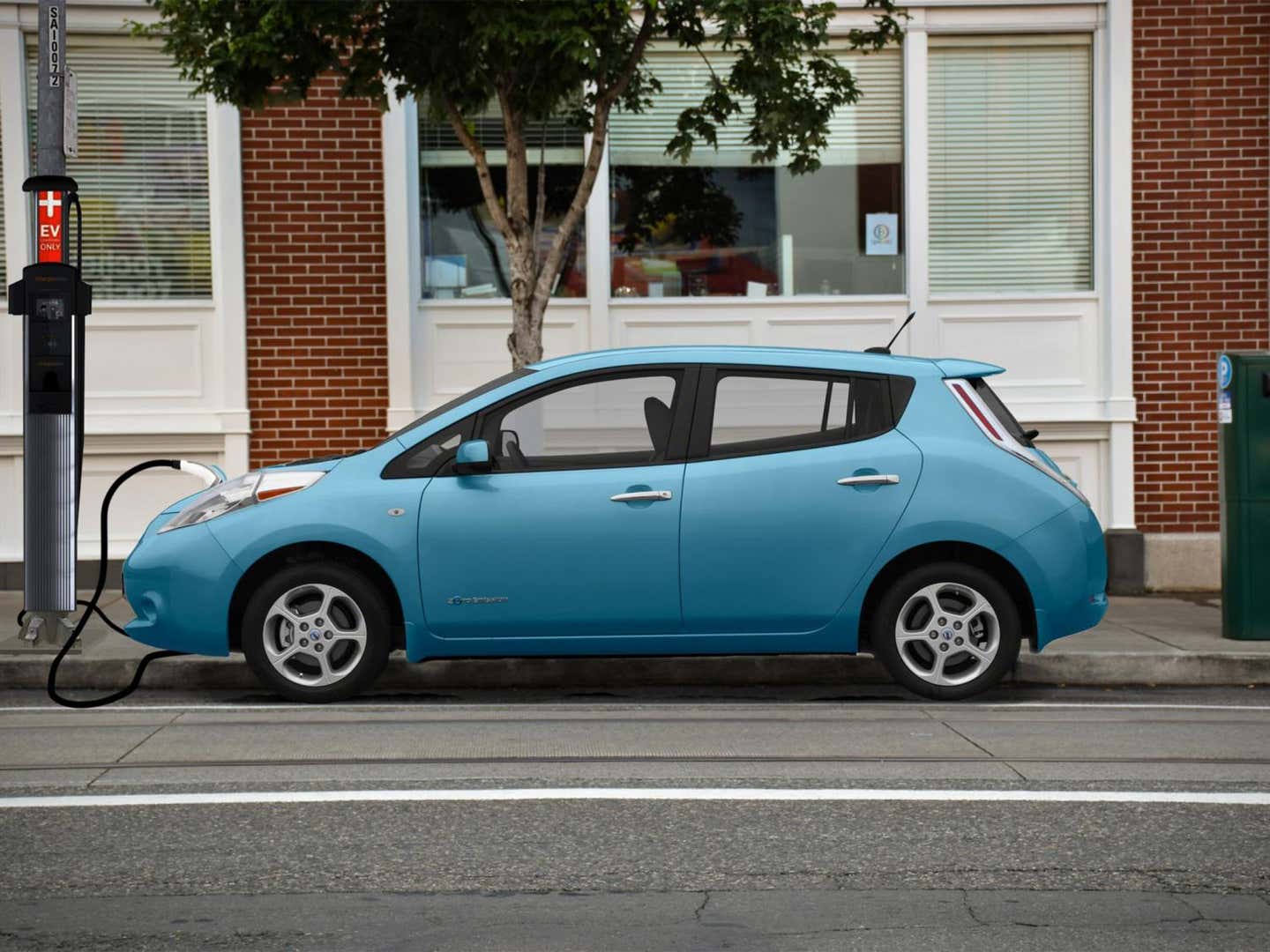Streetlights could be the answer to low-cost, accessible EV charging
Electric cars promise cleaner air, lower fuel bills, but for most motorists, the greatest challenge is where to charge up. A new report by Penn State researchers offers a brilliant,…

Turning streetlights into EV chargers could make electric cars more affordable, fair, and accessible for urban drivers. (CREDIT: XB Hu/Penn State)
Electric cars promise cleaner air, lower fuel bills, but for most motorists, the greatest challenge is where to charge up. A new report by Penn State researchers offers a brilliant, equitable solution: turning streetlights into charging stations. The idea has the potential to change the way cities extend electric vehicle (EV) infrastructure—faster, cheaper, and more equitably.
Power Where It's Needed Most
For most people, public charging will be the sole true public choice. For apartment dwellers and condo residents, home charging is not an option. Without a garage or driveway space, overnight charging is nearly a luxury. That's a tremendous barrier to EV adoption, even as sales continue to grow. By 2040, electric vehicles are projected to represent 11% to 28% of all vehicles on the road. But if charging is not as convenient as parking, that growth could make entire neighborhoods obsolete.
"Most apartment and multi-unit building residents, especially in urban and downtown settings, do not have access to special home EV chargers," said Xianbiao "XB" Hu, an associate professor of civil and environmental engineering at Penn State. "Luckily, the streetlight pole is already energized and usually municipally owned, so working with them is pretty straightforward."
Streetlights already line streets where cars park. They're connected to the electrical grid and publicly owned, meaning that cities can upgrade them without expensive trenching or construction. By placing charging equipment on existing poles, you can construct curbside charging that's both practical and fair—providing clean transportation to those who've been left behind in the EV revolution.
Building a Real-World Test
To make the shift from theory to practice, Penn State partnered with Recharge Kansas City, an alliance of the City of Kansas City, the Metropolitan Energy Center, a nonprofit institution, local utility Evergy, and the U.S. Department of Energy. They built and pilot-tested 23 street lighting charging stations along Kansas City, Missouri. They selected each site using a three-part framework that emphasized demand, technical feasibility, and social equity.
The research, which appeared in the Journal of Urban Planning and Development under the American Society of Civil Engineers, monitored performance for a year, between January and December 2023. Scientists were curious to know how the streetlight chargers compared with the old ones in terms of speed, expense, and environmental advantage.
According to the findings, the new plan bettered expectations even more. The updated streetlights charged faster, cost less to install, and helped lower emissions by minimizing gasoline usage. Because they drew power directly from city power lines, these chargers also saw less competition from multiple users, compared to busy commercial locations.
Smart Data Meets Street Smarts
To find where chargers should be sited, the research team developed a two-tiered siting model that combined artificial intelligence and local knowledge. They first worked with six years of data from 455 installed charging points in Kansas City to train a predictive model that forecasted weekly charging demand. The model considered factors like traffic flow, land use, trip generation, and the number of nearby points of interest—everything from grocery stores to apartment complexes.
Next was the equity layer. The community sought to see chargers not just go where they'd be busiest, but also where they'd be most needed. "We thought about equity, in this case, as proactive engagement with the community to offer just and equitable access to the streetlight charging advantages," said co-author Yang "Chris" Song, a former Penn State doctoral student who now works as a data scientist for ElectroTempo.
After merging the data with on-the-ground surveys, they chose the 23 most optimal sites—those that were in balance between expected demand and access to underserved neighborhoods. The installations that arrived at the final stage underwent safety inspections, engineering approvals, and regulatory testing to guarantee dependable operation.
Why Streetlights Make Sense
Retrofitting streetlights is very cost-effective. Because the poles are already installed and energized, installation is inexpensive relative to building new stand-alone stations. Municipalities also save time and public money from digging sidewalks or adding new electrical conduits.
Local control is also a plus. Cities can map charger networks based on public goals—lowering emissions, supporting local business, or increasing neighborhood convenience—without lengthy negotiations with individual property owners. That control simplifies scaling and makes it easier to balance equity with efficiency.
And since streetlights are near daily destinations, charging can easily be integrated into the daily routine. As your car charges, you can stop to shop, dine, or catch up with friends nearby. The effect is a system that doesn't feel like "refueling" at all, but rather like an ordinary aspect of city life.
Proving It Works
Once chargers were in place, the research team measured performance against that of normal charging stations. The researchers used a statistical test called the Mann–Whitney U test to confirm whether any differences in reliability and speed were real. The analysis found no significant performance differences—proving streetlight chargers can match standard stations for efficiency while being less expensive and available to more people.
The pilot, lasting one year, also revealed valuable insights on user behavior. Because the chargers were accessible and visible, on the curb and handily within reach, drivers made consistent and frequent use of them.
The researchers tied that convenience to measurable gasoline savings and lowered greenhouse gas emissions. With the passage of time, those benefits could be an important factor in helping cities achieve climate goals.
A New Model for Urban EV Access
Most prior research on charger placement attempted to maximize utilization or minimize travel distances—good goals, but ones that tend not to prioritize social equity. The Kansas City pilot broke new ground by marrying advanced data modeling with a strong focus on equity.
"We wanted a model that cities could quickly adopt," Song said. "Scalability was the largest factor in why this matters. It's not only for Kansas City—it's for cities in general."
Other researchers participating in the project included postdoctoral fellows Yuyan "Annie" Pan and Tianjia Yang, and doctoral student Yuxin Ding. Through their collaboration, they created a scalable, reproducible model for cities to expand EV availability without burdensome infrastructure costs.
The success of the initiative proves that cities do not need to start from square one to build a fair and effective EV network. They merely need to look up—to the streetlights that already illuminate the streets.
Practical Implications of the Research
Converting streetlights to electric vehicle charging stations can rewire the approach to public infrastructure in cities. Recycling infrastructure is cost-effective, speeds up deployment, and brings charging to everyone -- renters to multifamily dwellers.
This approach also encourages cleaner air and lower emissions, particularly for city communities most affected by car pollution.
Implemented broadly, streetlight charging can make going electric more just and sustainable, turning a humble utility into a climate action and economic justice force.
Related Stories
- Scientists caution against charging electric vehicles at home overnight
- Proton batteries offer safer, faster charging than lithium-ion
- New fungi-based battery needs feeding instead of charging
Like these kind of feel good stories? Get The Brighter Side of News' newsletter.
Shy Cohen
Science & Technology Writer



